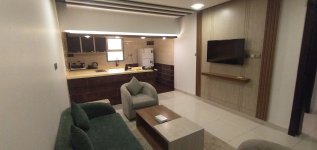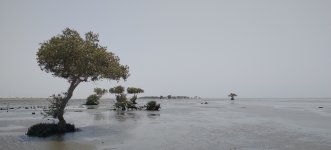
Arabian Odyssey. 26 March - 8 April 2023.
Introduction
Restricted range endemics, a flavour of the Afrotropics, superb Palaearctic migrants, Crab Plovers et al on tropical beaches …this is the avian melting pot of south-west Saudi Arabia, truly a destination second to none.
In my early years of travelling, pottering around the delights of Syria and Jordan, the idea of exploring Saudi Arabia had always been an alluring prospect. Back in those days, however, it was effectively a closed state - tourist visas were not issued, flights were expensive and travel options nonexistent. Roll on to the current day, all change - yet to be visited by many, but e-visas are readily available and budget flights operate from several European cities. To give an idea, I flew with Wizz Air, outward Vienna to Jeddah, return Jeddah to Milan …both new routes, price promotion resulted in 29 euro for the five-hour flight to Jeddah, an impressive 10 euro other way!
So it was, finally I got to fulfill a long-standing desire to visit Saudi Arabia. Coinciding with early spring migration, this thirteen-day trip focussed solely on the Jazan-Asir regions of the far south-west, splitting time between the distinctively Afrotropical lowlands, the adjacent Red Sea coast and the Asir Highlands above the escarpment, the latter home to most of the region's endemic birds.
Information on Butterflies
Although visiting Saudi Arabia has been an option only in fairly recent times, the birding locations are well-known and a one- or two-week trip is likely to produce most of the desired birds. By contrast, very little current information seems to exist regarding butterflies in the Kingdom - indeed it is difficult to even find an accurate list of species recorded. Most sources repeat a figure of just under 80 species, this seemingly based on the African Butterfly Database, which incorporates Saudi Arabia into its area of interest. However, I soon found this to be incomplete/out of date, finding several relatively common butterflies not in that database. For a better picture, the range maps in 'A Field Guide to the Butterflies of Lebanon and the Middle East' by Husein Ali Zorkot give a better idea of possible species, (though the illustrations in this book are not good enough for identification). Through this source and others, I think the Saudi Arabia butterfly list is actually nearer 130. Whatever it is, as with birds, there is a very nice mix of Arabian and African influences, the biggest number of species in the south-west definitely being African in flavour.
I did not have an identification guide for butterflies, but it was actually not very problematic - having previously spent time with butterflies in both the Middle East and Africa, most species were familiar. For groups that are difficult, specifically the whites and to a lesser extent the blues, I photographed and used online sources to double check identifications.
Before the trip, I really had no idea how many butterflies I would see, perhaps 30 or 40 species. As it turned out, as well as 209 species of birds, I managed 60 species of butterflies, far exceeding my expectations. Of particular note, I also found several butterflies that have a mere scatter of previous records in Saudi Arabia.
Introduction
Restricted range endemics, a flavour of the Afrotropics, superb Palaearctic migrants, Crab Plovers et al on tropical beaches …this is the avian melting pot of south-west Saudi Arabia, truly a destination second to none.
In my early years of travelling, pottering around the delights of Syria and Jordan, the idea of exploring Saudi Arabia had always been an alluring prospect. Back in those days, however, it was effectively a closed state - tourist visas were not issued, flights were expensive and travel options nonexistent. Roll on to the current day, all change - yet to be visited by many, but e-visas are readily available and budget flights operate from several European cities. To give an idea, I flew with Wizz Air, outward Vienna to Jeddah, return Jeddah to Milan …both new routes, price promotion resulted in 29 euro for the five-hour flight to Jeddah, an impressive 10 euro other way!
So it was, finally I got to fulfill a long-standing desire to visit Saudi Arabia. Coinciding with early spring migration, this thirteen-day trip focussed solely on the Jazan-Asir regions of the far south-west, splitting time between the distinctively Afrotropical lowlands, the adjacent Red Sea coast and the Asir Highlands above the escarpment, the latter home to most of the region's endemic birds.
Information on Butterflies
Although visiting Saudi Arabia has been an option only in fairly recent times, the birding locations are well-known and a one- or two-week trip is likely to produce most of the desired birds. By contrast, very little current information seems to exist regarding butterflies in the Kingdom - indeed it is difficult to even find an accurate list of species recorded. Most sources repeat a figure of just under 80 species, this seemingly based on the African Butterfly Database, which incorporates Saudi Arabia into its area of interest. However, I soon found this to be incomplete/out of date, finding several relatively common butterflies not in that database. For a better picture, the range maps in 'A Field Guide to the Butterflies of Lebanon and the Middle East' by Husein Ali Zorkot give a better idea of possible species, (though the illustrations in this book are not good enough for identification). Through this source and others, I think the Saudi Arabia butterfly list is actually nearer 130. Whatever it is, as with birds, there is a very nice mix of Arabian and African influences, the biggest number of species in the south-west definitely being African in flavour.
I did not have an identification guide for butterflies, but it was actually not very problematic - having previously spent time with butterflies in both the Middle East and Africa, most species were familiar. For groups that are difficult, specifically the whites and to a lesser extent the blues, I photographed and used online sources to double check identifications.
Before the trip, I really had no idea how many butterflies I would see, perhaps 30 or 40 species. As it turned out, as well as 209 species of birds, I managed 60 species of butterflies, far exceeding my expectations. Of particular note, I also found several butterflies that have a mere scatter of previous records in Saudi Arabia.









